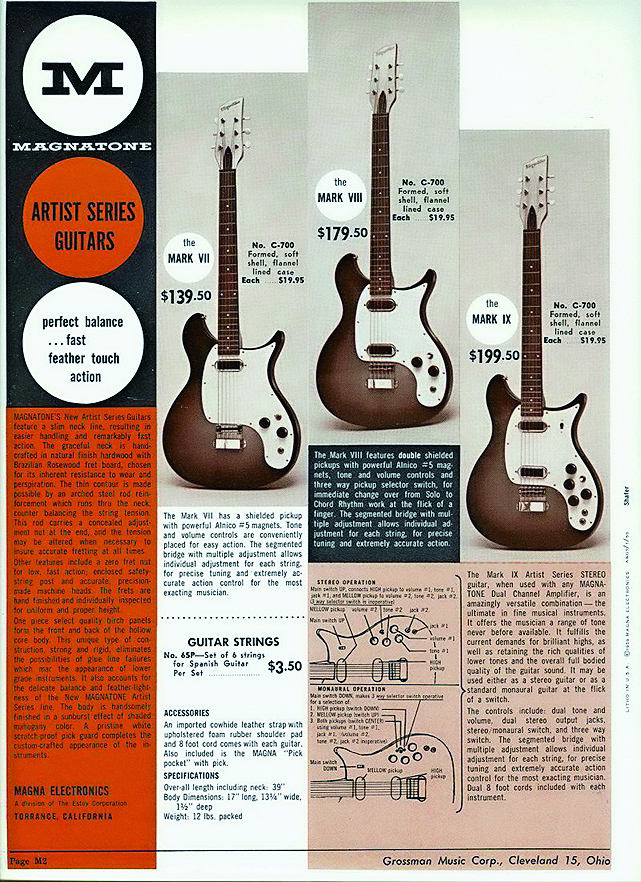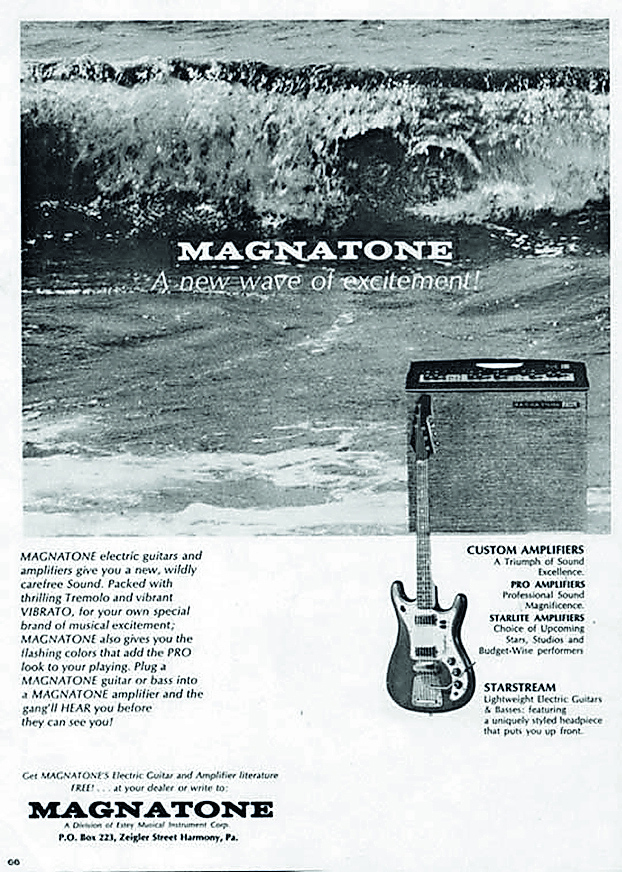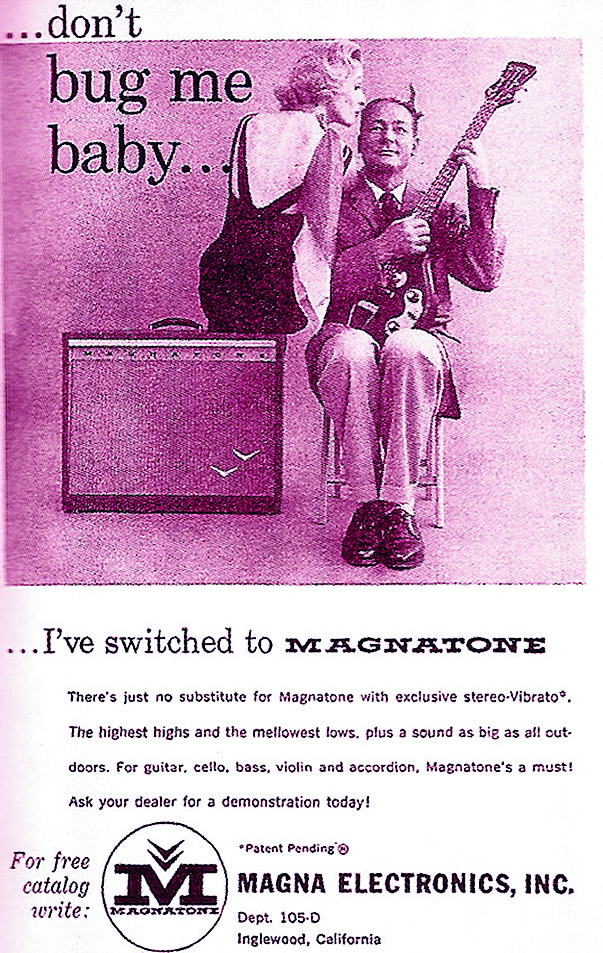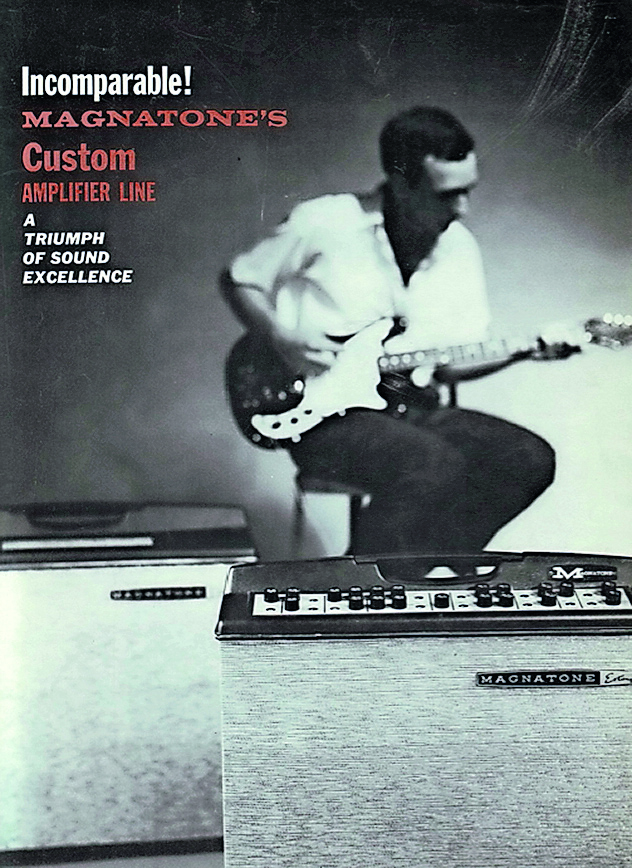
Magnatone advert 1

Magnatone advert 2

Magnatone advert 3

Magnatone advert 4
Magnatone's story has more twists than a Chubby Checker revival. We find out how Buddy Holly and others shaped the brand's sound
Delbert J Dickerson was a machinist in a radio factory in Salt Lake City before he relocated to Los Angeles at the beginning of the 1930s. When his guitar student daughter Belva needed an electric steel guitar and amplifier, Delbert duly built them for her.
Her guitar teacher was so impressed, he asked for an amplifier for his own use, and it was through word of mouth that Dickerson soon became the go-to guy for guitars and amps for the Southern Californian Hawaiian guitar glitterati.
During the war
By the time war broke out in Europe in 1939, the Dickerson Musical Instrument Manufacturing Company's product line comprised several steel guitar models and matching amplifiers, and Dickerson owned a number of patents, including a magnetic pickup and a guitar case/amplifier combo. The company had also begun to build guitars and amplifiers for other brands.
The company changed hands twice in the mid-1940s, and it was Art Duhamell who acquired the business in 1946, changing the brand name to Magnatone and the business name to Magna Electronics Company. As the company expanded, circuit designs and aesthetics evolved, too.
By 1955, chasing the popularity of Fender and Gibson's solidbody electric guitars, Magnatone commissioned Paul Bigsby to design the Mark series of electrics, although production diminished along with Bigsby's input by late 1957. The same year, the company was sold again.
Although the company made a huge amount of money from the student market, the list of big-name Magnatone players of the period is small, but notable artists include Lonnie Mack - listen to Wham to hear the warbling Don L Bonham-designed Magnatone vibrato in action - Bo Diddley and Buddy Holly.
Want all the hottest music and gear news, reviews, deals, features and more, direct to your inbox? Sign up here.

The latter obtained a Magnatone Custom 280 in September 1958, some six months before his death. The model featured stereo pitch-shifting vibrato and a pair of Jensen 12-inch speakers, alongside two five-inch tweeters, and although Holly was smitten with its sound, studio use was limited to demo sessions only. Had he survived, it might well have been a different story.
In the late 1950s, Magnatone expanded into premium-priced pro amplifier territory and relaunched the Mark guitar line, this time designed by another Paul, Paul Barth. Yet more ownership changes resulted in the company focusing on organs in the early 1960s, and Magnatone was in danger of missing the beat boom boat.
Tony Jerome to the rescue?
Something had to be done, so professional guitarist Tony Jerome was brought in as a consultant who also embarked on a clinic tour of the US that showcased the brand's guitar products. 1963 saw new Custom Series and student-focused Magantone Starlite amps go into production, while Barth was called upon again in 1964 to design the company's new, Fender-influenced, Starstream series.
Sadly, financial complications and insolvency followed, and a money-saving relocation from Southern California to Harmony, Minnesota understandably saw the company shed key personnel, who were less than enthusiastic about swapping 300 days of unbroken sunshine per year for the chill of the Midwest.

Magnatone ceased production of valve guitar amplification between 1967 and '68, with new, trendy solid-state designs taking over. Brands such as Kustom and Vox were shifting units with new transistor amps, but Magnatone struggled to compete, and a parent company acquisition in 1969 would spell the end for the Magnatone name until its re-emergence in 2013.
Sleeping giant
During the intervening years, this sleeping giant of American guitar tone could often be seen alongside various Fenders in the backline of a certain Mr Neil Young, while artists as diverse as Scotty Moore, Phil X, and Slash have also been hip to the brand's tonal charms.
And if you are prepared to deal with the logistics of importing a vintage valve amplifier from the US, some of Magnatone's original low-powered 'student' amps can still be found for sensible money on eBay, and are wonderful machines for obtaining trashy garage rock and edgy blues sounds in the studio.

------------------------------------------------------------------------------------------------------------
Alternatively, check out the full reviews of the new Twilighter Stereo and Super 59 below

Guitarist is the longest established UK guitar magazine, offering gear reviews, artist interviews, techniques lessons and loads more, in print, on tablet and on smartphones
Digital: http://bit.ly/GuitaristiOS
If you love guitars, you'll love Guitarist. Find us in print, on Newsstand for iPad, iPhone and other digital readers


